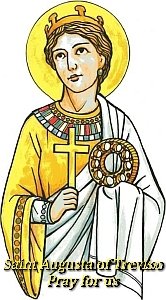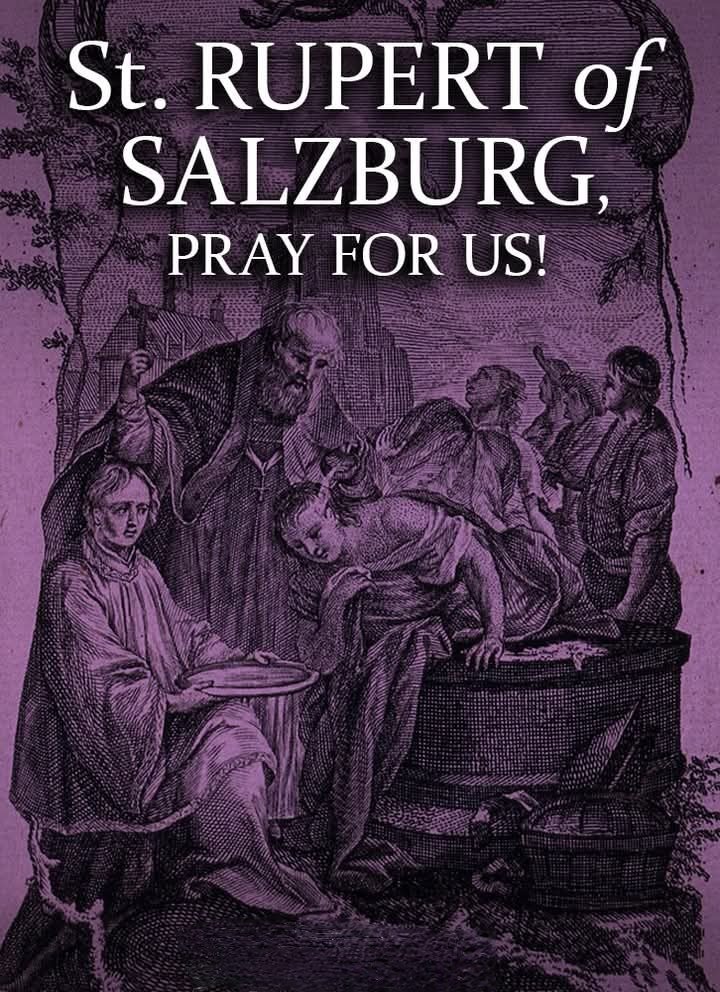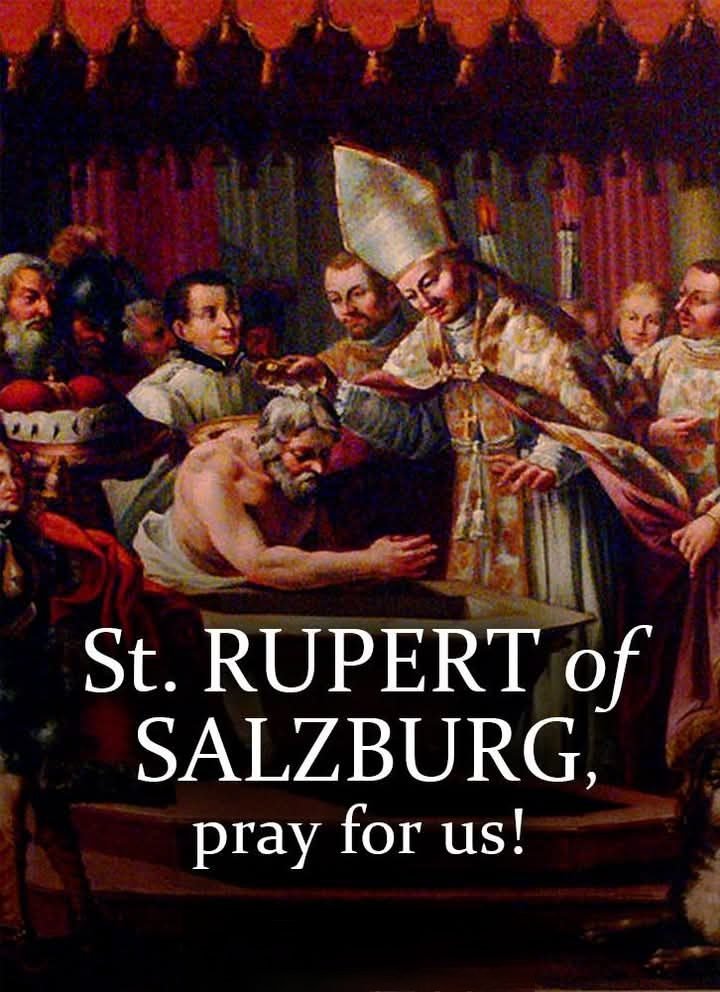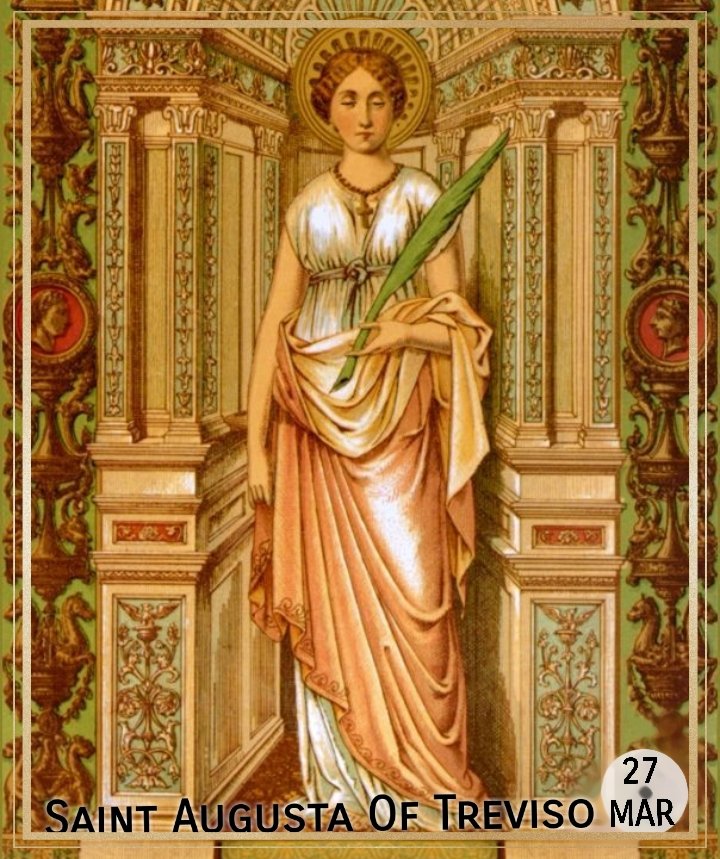FEAST OF SAINT AUGUSTA OF TREVISO, VIRGIN AND MARTYR
FEAST DAY – 27th MARCH
Saint Augusta of Treviso, also known as Augusta of Ceneda, Augusta of Tarvisium, or Augusta of Serravalle, is venerated as a virgin martyr. Her Acts were written in the 16th century by Minuccio Minucci di Serravalle, who was secretary to Pope Clement VIII and Protonotary apostolic. According to her legendary Acts, Augusta was the daughter of Matrucus, pagan chief of the Alemanni, who had conquered the Friulians, who had been Christianized, and ruled over them.
Augusta converted to Christianity secretly. Her father, chief Matrucus, suspecting that the Christian Friulians were influencing his daughter with their faith, sent spies to watch her day and night. The spies returned and confirmed his worst fears. She had indeed become Christian and had been caught praying at night. In a fit of rage, he had her arrested. Viciously, he and his men beat her, yelling at her to recant her faith and return to their ways.
Between blows she struggled to pray to Christ, refusing to recant. Her enraged father then tortured and kicked Saint Augusta so hard that he knocked out all of her teeth. Through crying eyes, she held on in prayer. He eventually decapitated her with his sword at Serravalle, a district of the present-day Vittorio Veneto, around 100 AD.

Her name is listed in Ferrarius’ Catalogue of Saints, but not in the Roman Martyrology. 1 August was the day in which the translation of her relics was celebrated, and 22 August the invention (discovery) of her relics, but the main feast day is 27 March. Her relics are said to have been found a few years after her death on the hill called Santa Augusta after her, which overlooks Serravalle.
A church dedicated to her was built in the 5th century. St. Augusta is depicted with the symbols of her Martyrdom, a toothed wheel for torture, her teeth that were torn from her mouth, and her palm. On the hill of St Augusta, there are still the remains of the castle of her grim father Matruco, and the large Church dedicated to her. She is patron of Ceneda, Italy.
PRAYER
O God, who gladden us today with the annual commemoration of Blessed Augusta, graciously grant that we may be helped by her merits, just as our lives are lit up by the splendor of her example of chastity and fortitude.
Through our Lord Jesus Christ, your Son, who lives and reigns with you in the unity of the Holy Spirit, one God, for ever and ever. Amen

Saint Augusta of Treviso, pray for us.
+++++++++++++++++++++++++++++++++
ALSO CELEBRATED:

SAINT RUPERT OF SALZBURG
Rupert’s origins are obscure, though there are strong indications that he was a Frenchman, and, according to a certain tradition, a scion of the old Frankish Merovingian family – and certainly a contemporary of Childebert III, king of the Franks.
Rupert was already a bishop and known for his great virtue, when he was invited by Duke Theodo of Bavaria, himself still a pagan, to evangelize his people.
Although the Gospel had already been preached in Bavaria, its people were, for all intents and purposes, but nominally Catholic, as pagan practices and Arian heretical beliefs persisted in their midst, adulterating the purity of the Christian doctrine. Rupert and his companions were warmly received in the ancient town of Ratisbon. The Duke Theodo presently received Baptism and with him a number of his nobles.

With no serious opposition to the missionaries’ work, Christianity flourished under the apostolate of Bishop Rupert and his companions who proceeded to confirm the faith of some, to evangelize many, Christianize pagan temples, and build churches. In the course of his work the saintly bishop worked countless miracles.
In his generosity, Theodo gave Rupert the region of Juvavum, present-day Salzburg in Austria, for his apostolic see. Returning to France, the abbot-bishop convinced another twelve men, as well as his niece St. Erentrudis, to join him in his mission.
With his niece he founded a Benedictine monastery for women in Nonnberg, and with the twelve men a Benedictine monastery for men, St. Peter at Salzburg. The saint spent his life dedicated to the work of not only evangelizing and guiding his flock, but also of civilizing his people. He also did much to promote the salt mines in the region for which he renamed the city Salzburg.
Rupert died in Salzburg around the year 710. Many churches in the region are named after this Apostle of Austria and Bavaria, and the first Abbot-Bishop of Salzburg.
PRAYER
Father, by your grace, Saint Rupert, submitted to your will to the work of evangelizing people in Bavaria and Austria. Grant that we may, in firm faith, emulate his zeal for enlightening those who are led astray from the Church by false teaching. We ask this through our Lord Jesus Christ, your Son, who lives and reigns with you and the Holy Spirit, God for ever and ever. Amen







